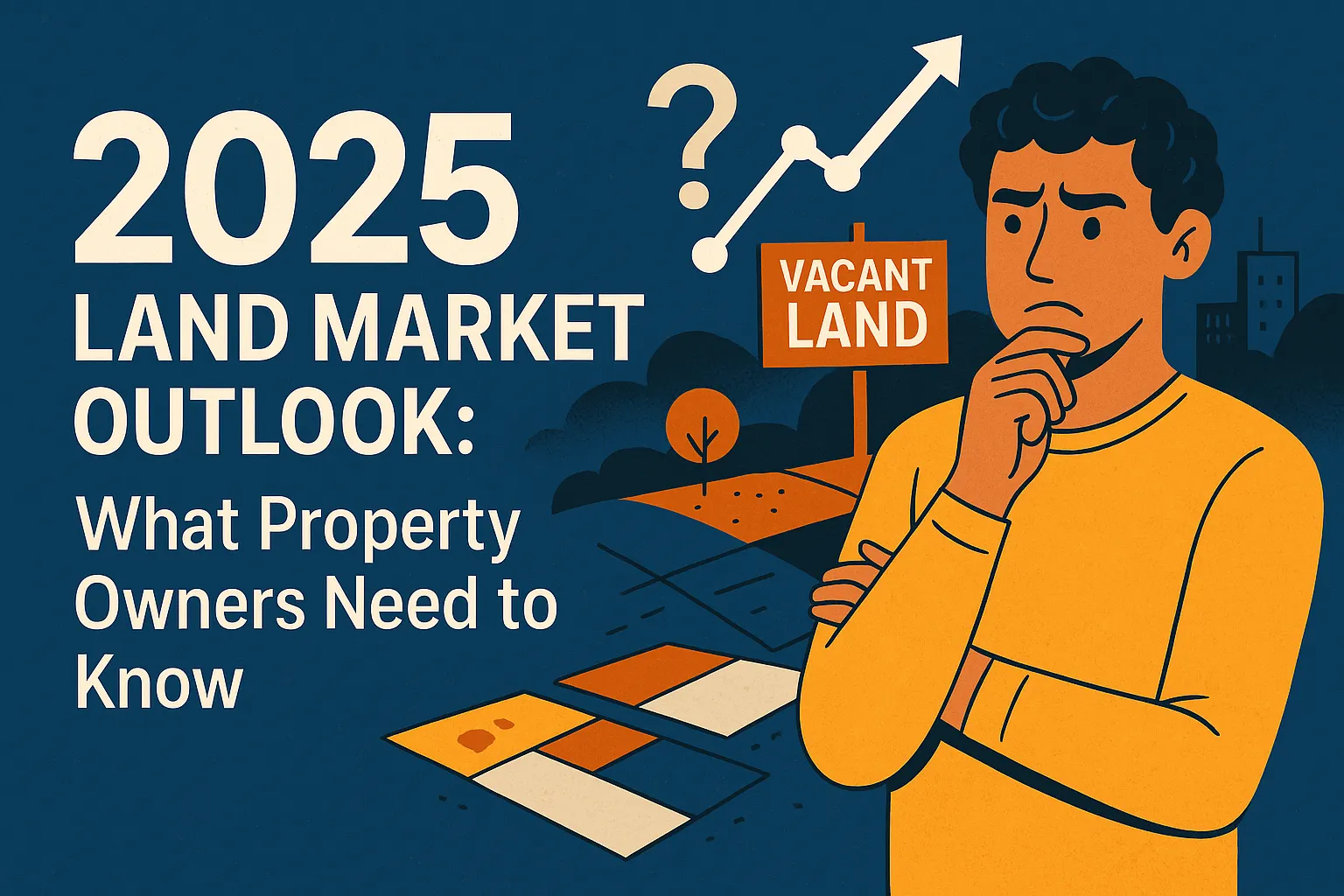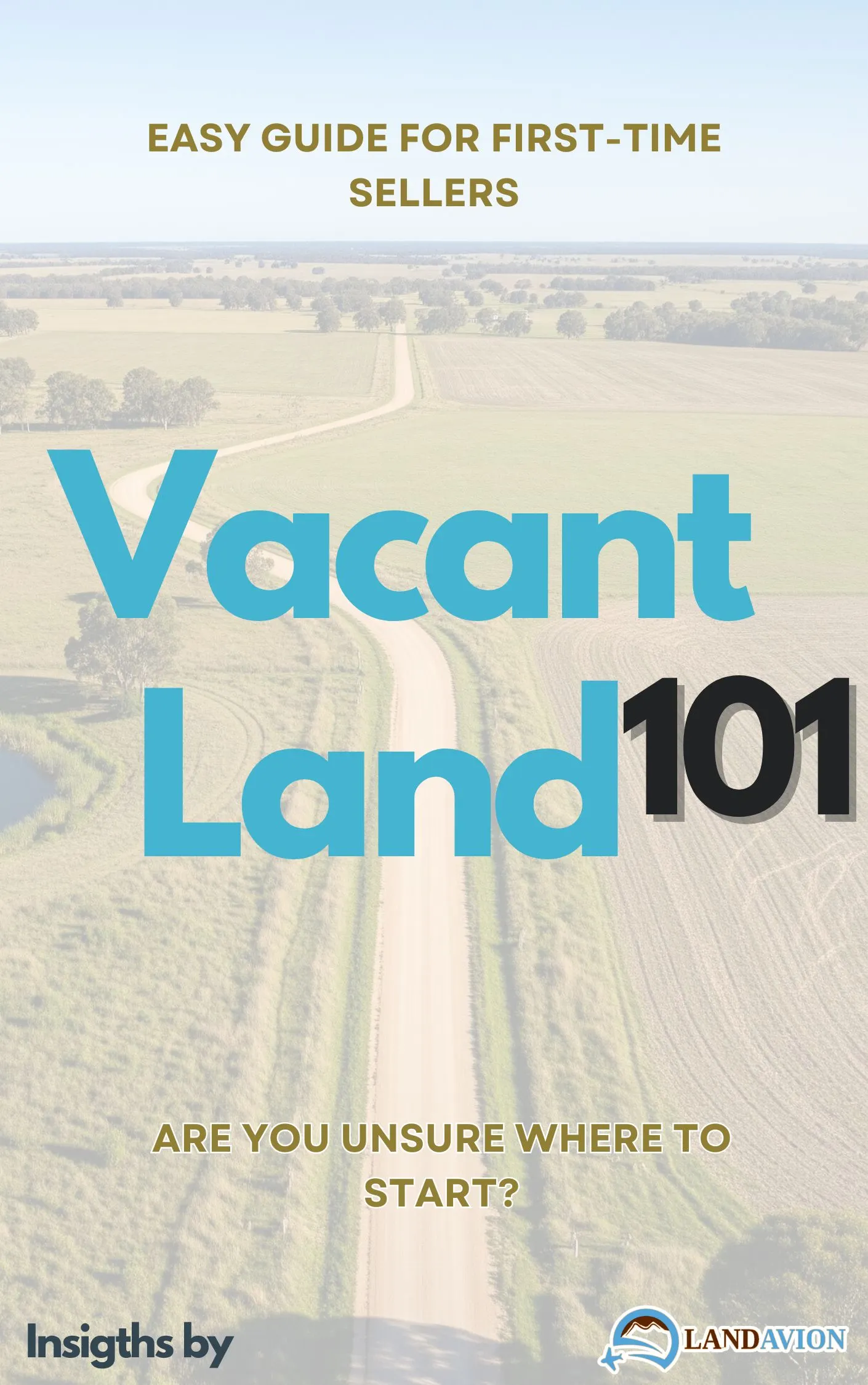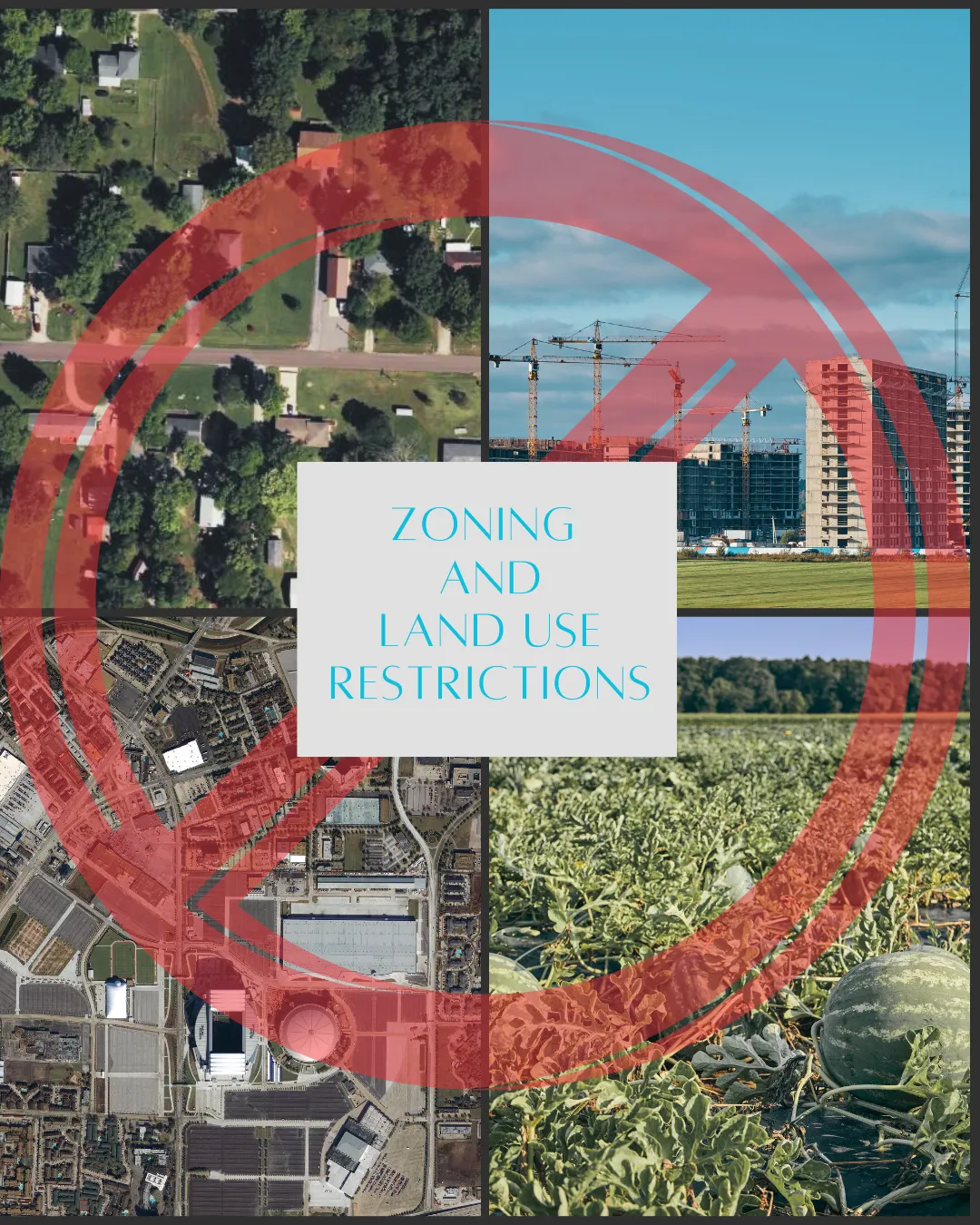7 Proven Strategies to Sell Vacant Lots Successfully
Introduction
Selling vacant land can feel like navigating a maze blindfolded, especially when you discover that selling undeveloped land requires completely different strategies for selling land than traditional real estate. Whether you're dealing with selling rural acreage or trying to figure out how to sell commercial lots, the process can quickly become overwhelming and expensive.
The truth about selling raw land? It's not as simple as putting up a "For Sale" sign and waiting for offers to roll in. Unlike houses that practically sell themselves in hot markets, developing a vacant land selling strategy requires specialized knowledge, significant patience, and often more time and money than most property owners ever anticipate.
In this comprehensive guide, we'll explore seven proven tips for selling land that reveal what really goes into selling vacant land fast—or at least, as fast as vacant land typically sells. From understanding the complex legal aspects of selling land to navigating the often-surprising tax implications of selling a lot, we'll uncover why so many landowners find themselves stuck with properties that drain their resources year after year.
Did you know that vacant lots typically take 3-6 times longer to sell than residential properties? That's months or even years of accumulating property taxes, ongoing liability concerns, and unexpected maintenance costs. According to recent market data, the average time on market for vacant land exceeds 180 days in most areas—and that's for properties that eventually sell. Many never do.
But there is good news: understanding these strategies will help you make an informed decision about the best way to sell a vacant lot, whether that's tackling the traditional route with all its complexities or exploring faster alternatives like companies that specialize in helping you sell your land for cash.
1. Determine the True Market Value (And Why It's More Complicated Than You Think)
One of the biggest challenges in selling vacant land is that determining accurate market value isn't straightforward. Unlike residential properties with clear comparables and established pricing models, vacant land values can vary wildly based on factors most sellers never consider until they're deep in the selling process.
The Hidden Complexities of Land Valuation:
Zoning Intricacies:
What seems like a simple residential lot might have overlay districts, setback requirements, or use restrictions that dramatically affect value. Discovering these restrictions often requires paying for professional zoning reports that cost $500-$1,500.
Environmental Assessments:
That pristine meadow might be classified as wetlands, or your wooded acreage could be home to protected species. Environmental Phase I assessments alone can cost $1,500-$4,000, and if issues are found, Phase II assessments can run $5,000-$15,000.
Utility Access Mysteries:
The presence (or absence) of utilities isn't always obvious. Determining the cost to bring water, sewer, and electricity to your property requires engineering studies that can cost thousands. Sometimes the nearest connection point is miles away, making development economically unfeasible.
Development Potential Variables:
What can actually be built on your land depends on dozens of factors including soil conditions, percolation rates, flood zones, and local development standards. Professional feasibility studies to determine this can cost $2,500-$7,500.
Many landowners spend months trying to price their property correctly, consulting multiple sources and still ending up confused. They often discover they've either priced themselves out of the market entirely or left significant money on the table. Professional appraisals for vacant land typically cost $1,000-$3,000, and even then, appraisers often struggle with unique parcels that lack clear comparables.
The Reality Check:
Without deep knowledge of local land markets, development trends, and municipality planning, pricing becomes expensive guesswork. This is why vacant land buyers who specialize in land acquisition often have significant advantages—they've already invested in the market research and have established relationships with local planning departments.
2. Prepare Your Land for Sale (Or Accept the Financial Consequences)
How to prepare land for sale traditionally involves significant investment, but here's what most guides won't tell you: preparing vacant land for the traditional market can quickly become a money pit that never pays back your investment.
Traditional Preparation Costs That Add Up Fast:
Clearing and Grubbing:
$1,200-$4,000 per acre is typical, but if you have mature trees or significant brush, costs can exceed $7,000 per acre. And here's the kicker—clearing land doesn't always increase value proportionally to the cost.
Survey Updates:
That old survey from 1987 won't cut it. New surveys cost $500-$2,000 for small lots, but can reach $5,000-$10,000 for larger acreages. Without a current survey, many buyers won't even consider your property.
Environmental Assessments:
Beyond basic Phase I assessments, you might need wetland delineations ($2,000-$5,000), endangered species surveys ($1,000-$3,000), or soil testing ($500-$2,000).
Access Improvements:
If your property lacks proper road access, creating even a basic gravel drive can cost $5,000-$20,000 depending on distance and terrain. Paved access? You're looking at $100-$200 per linear foot.
Permit Research and Documentation:
Gathering all necessary permits and documentation typically costs $500-$1,500 in professional fees, not counting your time visiting multiple government offices.
The alternative? Selling land as is might seem like it would drastically reduce your property value, but here's an industry secret: specialized agricultural land buyers and land investment companies often prefer unimproved land—they have the resources, expertise, and economies of scale to handle improvements themselves more cost-effectively.
There's no need to make improvements when you work with the right buyer. In fact, one of the most common mistakes when selling vacant property is over-investing in improvements that don't significantly impact the final sale price. Many sellers spend $20,000 on improvements only to increase their sale price by $10,000—a losing proposition.
3. Create a Listing That Actually Gets Noticed (Spoiler: It's Harder Than You Think)
Marketing how to sell empty property requires far more than just basic information and a few photos. The challenge? Most vacant land listings get buried in online searches because they lack the visual appeal and detailed information that serious buyers demand.
What Effective Land Listings Actually Require:
Professional Photography:
Including aerial shots, seasonal variations, and boundary markers typically costs $500-$1,500. Without these, your listing looks amateur and gets scrolled past.
Detailed Topographical Information:
Buyers want to see elevation changes, drainage patterns, and buildable areas. Creating these maps costs $1,000-$2,500.
Comprehensive Utility Reports:
You'll need documentation showing utility availability, connection costs, and provider contact information. Gathering this information often requires multiple calls and site visits.
Zoning Verification Documents:
Current zoning letters from the municipality, permitted use lists, and variance possibilities. These documents can take weeks to obtain and may require legal assistance.
Environmental Clearances:
Any relevant environmental reports, flood zone determinations, and soil studies must be included for serious buyers.
Development Possibility Studies:
Conceptual site plans showing potential uses help buyers visualize possibilities but require architect or engineer involvement at $2,500-$5,000.
Without these elements, your listing becomes invisible in a sea of other vacant properties. This is particularly challenging when trying to find buyers for vacant land because serious buyers expect comprehensive information upfront and will simply skip listings that lack detail.
4. Navigate the Complex World of Land Marketing
Understanding how to sell residential lots versus rural parcels versus commercial land requires entirely different marketing approaches. The platforms and strategies that work brilliantly for houses often fail miserably for land, leaving sellers frustrated and confused.
Marketing Realities for Different Types of Vacant Land:
Traditional MLS Limitations:
Most MLS systems are designed for homes, not land. Your vacant lot gets lumped into categories that don't accurately represent its potential, limiting exposure to qualified buyers.
Social Media Challenges:
Effective social media marketing for land requires consistent posting, professional content creation, and targeted advertising—often costing $500-$2,000 monthly for professional management.
Land-Specific Websites:
While sites like LandWatch and Land.com exist, they have much smaller audience pools than residential platforms. Plus, premium placement on these sites can cost hundreds per month.
Local Marketing Efforts:
Newspaper ads might reach some agricultural land buyers, but circulation is declining. A small classified ad can still cost $200-$500 monthly with minimal response.
Signage Limitations:
"For Sale" signs only work if people actually drive by your property. For selling rural acreage located on back roads, you might get a dozen views per month.
The harsh truth? Effective land marketing often requires 6-12 months of consistent, multi-channel effort before generating serious interest. During this entire time, you're still paying property taxes, insurance, and potentially HOA fees while fielding calls from tire-kickers and lowball investors.
5. Understanding Your Limited Buyer Pool
One of the biggest surprises in selling rural acreage or any type of vacant land is discovering how limited the actual buyer pool is. Unlike residential properties where anyone needing a home is a potential buyer, vacant land appeals to a very specific—and much smaller—audience.
Who Actually Buys Vacant Land (And What They Expect):
Developers:
They're looking for deals at 30-50% below market value because they factor in holding costs, development risks, and profit margins. They also expect sellers to provide extensive due diligence materials at the seller's expense.
Adjacent Property Owners:
They know you're motivated to sell and often make lowball offers, expecting desperate sellers to accept anything to stop paying taxes.
Investors and Speculators:
These vacant land buyers are sophisticated and patient. They're looking for distressed sellers and properties they can flip for profit. Fair market value isn't in their vocabulary.
Individual Dreamers:
These buyers often have grand plans but struggle to secure financing. Banks typically require 20-30% down for land loans, with higher interest rates and shorter terms than home mortgages.
Finding a real estate agent for selling land who actually understands this limited market is surprisingly difficult. Most agents avoid land deals because:
- Commissions are typically lower than home sales
- Transactions take much longer to complete
- The specialized knowledge required isn't worth developing for occasional deals
- Land buyers are harder to find and qualify
This limited buyer pool means your property might sit on the market for months or even years, accumulating costs while you wait for that elusive qualified buyer.
6. Navigate Legal and Financial Complexities That Can Derail Your Sale
The legal aspects of selling land can make your head spin and your wallet lighter. Unlike residential sales with standard procedures and well-established practices, land sales involve unique challenges that catch sellers off guard and can kill deals at the last minute.
Legal Considerations Often Overlooked Until It's Too Late:
Title Issues:
That clean title you assumed you had might have clouds you never knew existed. Title searches for vacant land often uncover mineral rights reservations, ancient easements, or boundary disputes that require legal resolution costing thousands.
Easement Complications:
Utility easements, access easements, and prescriptive easements can all affect value and usability. Researching and documenting these requires title company involvement and potential legal counsel.
Mineral Rights Questions:
In many states, mineral rights can be severed from surface rights. Determining what rights you actually own might require extensive title research costing $1,500-$3,000.
Environmental Restrictions:
Federal, state, and local environmental regulations can severely limit land use. Wetlands, endangered species habitat, and conservation easements might exist without your knowledge.
Survey Discrepancies:
That fence line you've always assumed was the property boundary might be wrong. Survey disputes with neighbors can cost tens of thousands to resolve through legal channels.
The tax implications of selling a lot add another expensive layer of complexity:
- Capital gains calculations for land can be particularly complex
- If you inherited the property, determining basis can require expensive professional help
- 1031 exchange possibilities require strict timing and professional guidance
- State and local transfer taxes vary widely and can be substantial
Many sellers discover these issues only after accepting an offer, leading to deal collapse or expensive last-minute negotiations.
7. Choose Your Timing Carefully (Or Risk Waiting Forever)
Choosing the right time to sell your lot might be the most frustrating strategy of all. Land markets move in mysterious ways, influenced by factors completely beyond your control. What seems like perfect timing can quickly turn into a years-long waiting game.
Timing Factors That Can Make or Break Your Sale:
Local Development Plans:
That new shopping center planned nearby could double your land value—if it actually happens. Many announced developments never materialize, leaving hopeful landowners waiting indefinitely.
Interest Rate Sensitivity:
Land loans are particularly sensitive to rate changes. A 1% increase in rates can reduce buyer purchasing power by 10-15%, shrinking your already limited buyer pool.
Seasonal Patterns:
Land sales typically slow dramatically in winter months. But waiting for spring means more months of carrying costs with no guarantee of better results.
Economic Cycles:
Land values are more volatile than residential real estate. Economic downturns hit land values first and hardest, often taking years to recover.
Municipal Planning Changes:
Zoning updates, infrastructure plans, and development moratoria can all affect timing. These processes often take years with uncertain outcomes.
Some landowners wait years for the "perfect time" to sell, accumulating thousands in carrying costs while their land sits idle. Property taxes, insurance, HOA fees, and maintenance costs add up relentlessly. A property with $2,000 annual carrying costs will cost you $10,000 over five years—money you'll never recover.
The Alternative Path: Selling Vacant Land Fast Without the Hassle
After reviewing these seven strategies, you might be thinking, "There has to be an easier way." You're absolutely right. While traditional selling methods work eventually for some properties, they require significant time, money, and expertise that most landowners simply don't have or want to invest.
This is where specialized land buying companies like Land Avion offer a completely different approach. Instead of navigating months or years of preparation, marketing, and negotiations, you can sell your land for cash in a matter of weeks. No improvements needed, no marketing costs, no agent commissions—just a straightforward transaction that ends your property burden quickly.
The Land Avion Advantage:
- Fair cash offers based on current market conditions
- Zero preparation or improvement costs required
- All closing costs covered by Land Avion
- Quick closing (typically 2-3 weeks, not months)
- No marketing, waiting, or uncertainty
- Professional handling of all legal aspects
- Solutions for properties with title issues or other complications
Conclusion: Making the Smart Choice for Your Unique Situation
These seven strategies for selling vacant land fast reveal an important truth: traditional land sales are complex, time-consuming, expensive, and often frustrating. While some sellers have the resources, patience, and expertise for the traditional route, many discover that the carrying costs, preparation expenses, marketing efforts, and opportunity costs simply don't make financial sense.
The traditional path might work if you have:
- Unlimited time and patience
- Deep pockets for improvements and marketing
- Expertise in land development and sales
- No urgent financial needs
- Enjoyment of complex negotiations
But if you're like most landowners—tired of paying taxes on vacant land, worried about ongoing liability, or simply ready to convert your land into usable capital—then exploring alternatives makes sense.
Whether you choose the traditional path with all its complexities or opt to sell your land for cash through a company like Land Avion, the key is making an informed decision based on your specific situation, timeline, and financial goals.
Ready to explore your options and see what your land is worth?
📧 Email: [email protected]
🌐 Visit: landavion.com
Because sometimes the best vacant land selling strategy is the one that gets you results quickly, fairly, and without all the headaches, costs, and uncertainty of traditional selling methods.






